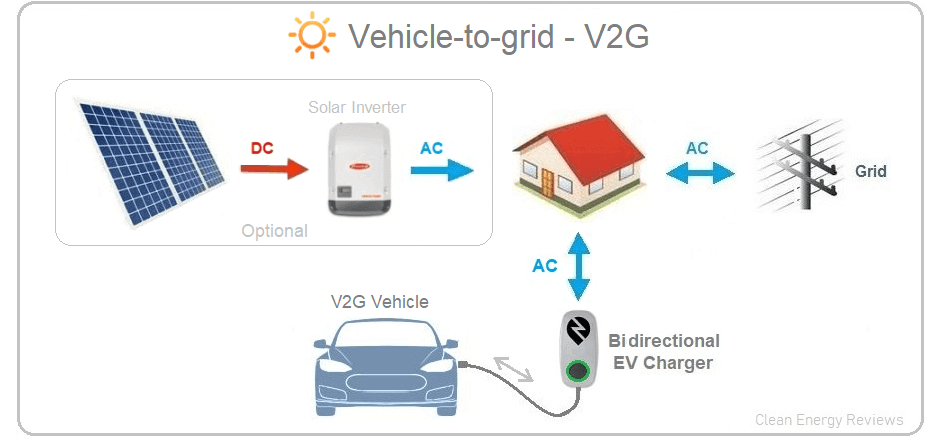Bi-Directional EV Charging
EV sales in the US are on the rise, reaching 7% of all car sales in Q1 2023, up from 4.6% a year earlier. If that rate of growth continues, EVs will be 10% of the US car market by next year.
Most people who own an EV charge it at home, using an EV charger. Our family owns a few different models. Here are two of them.

The reason we have two chargers right next to each other is one charges our Tesla and the other charges our other EVs. It is like an iPhone and an Android. Each has its own charging cable. I expect that is going to get sorted out soon as the EV market will work a lot better with a standard charging cable.
But what is even more interesting to me is the idea of bi-directional EV charging.
Right now, EV charging is “one way”. Those chargers take power from our home (either from our solar panels or the grid) and send it to our EVs.
But it does not have to work that way. There are bi-directional chargers that can take the power from our EVs and send it to our home.
That would be very useful in the event of a power outage. But it could also be useful to supplement our solar panels at night. Imagine our solar panels filling up our EV batteries during the day when it is sunny out and our EVs powering our home at night when it is not.
This is a nice primer on the topic of bi-directional EV charging. I like this diagram from that primer.

That is the simplest version of bi-directional EV charging. That primer has a bunch more diagrams of more sophisticated versions.
As we transition from a centralized electrical grid to a decentralized electrical grid over the next few decades, storage on the edge (homes, etc) will become critical to making the transition work. And EVs are a huge source of storage that are mostly not connected to the grid right now.
That is going to change and there are lots of opportunities to build innovative services around bi-directional charging as a result.
The Gotham Gal and I make environmentally designed apartment buildings and the one we are making right now has eight parking spots in the basement. We will outfit those parking spots with bi-directional chargers so that the cars in the garage will be connected to the apartments and they can power them in the event of a power outage. We expect to be able to offer additional services to our tenants over time using this technology.
The forty years that I have worked in information technology have seen a remarkable decentralization of computing from mainframes to computers in our pockets. And that has unleashed an enormous wave of innovation. I expect we will see the same thing in the energy grid/market over the next forty years. I am really excited to witness that.

